


cnc銑床
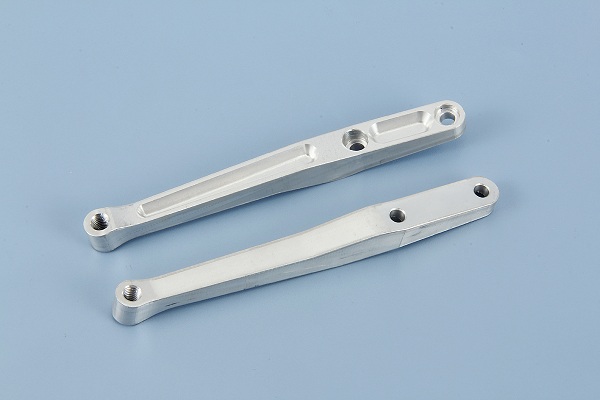
cnc銑床
CNC milling machine, CNC milling machine, CNC milling plants, milling machine, CNC milling machine, milling machine products, mold development, mold design, all kinds of mold development
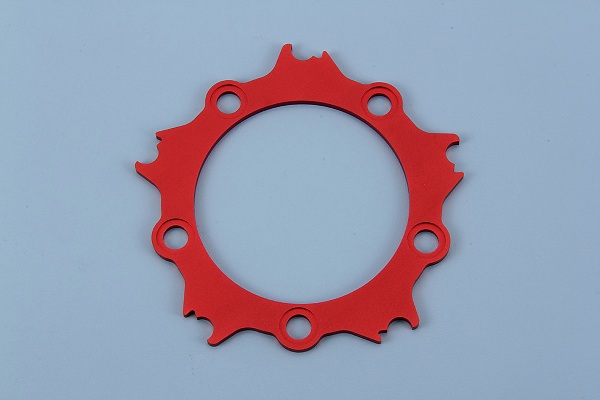
Parts production, the production of metal parts, CNC parts production, product processing, semi-finished products processing, CNC machining and semi-finished products processing
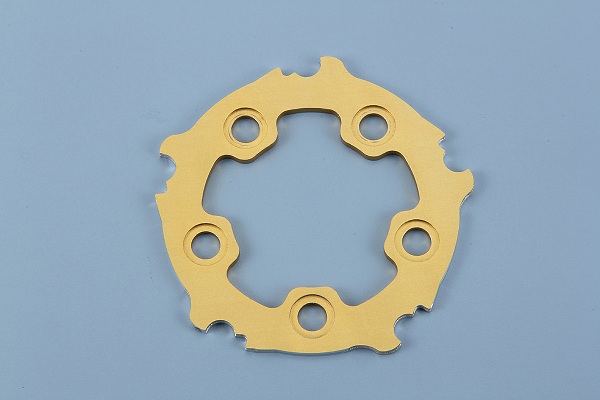
cnc銑床
Aluminum products processing, CNC machining of aluminum products, aluminum products, metal processing, CNC metal processing, CNC Metal Processing
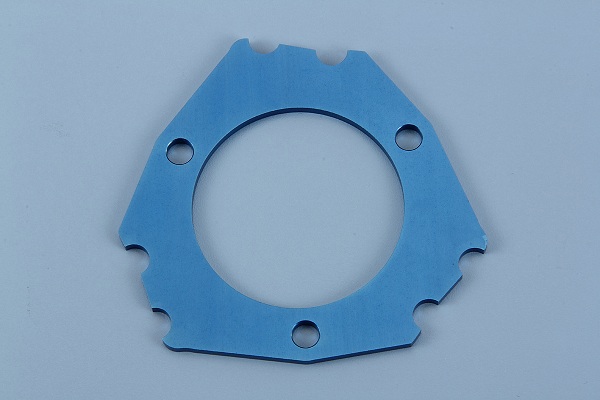
cnc銑床
CNC銑床, CNC銑床加工, CNC銑床加工廠,銑床加工,CNC銑床加工, 銑床加工製品,模具開發, 模具開發設計,各式模具開發
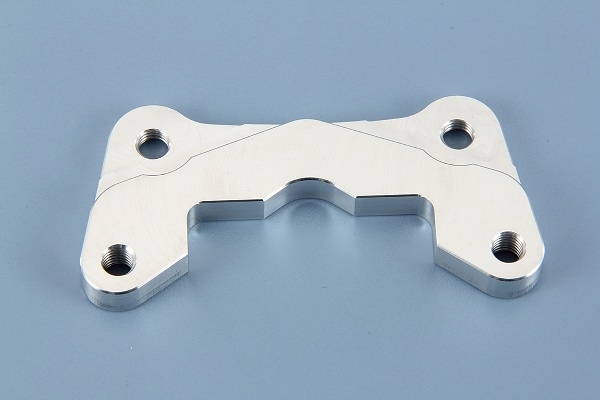
cnc銑床
零件生產, 五金零件生產,CNC零件生產,成品加工,半成品加工, CNC成品加工及半成品加工
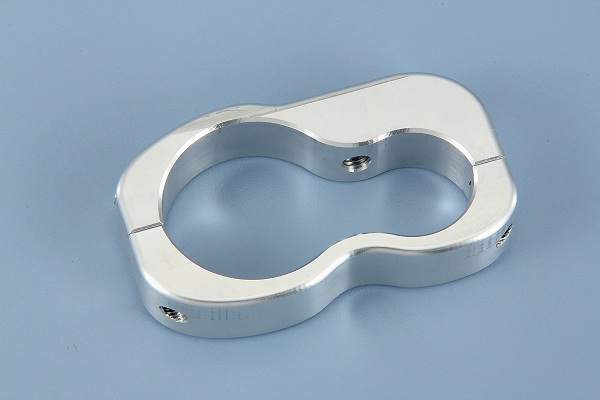
cnc銑床
鋁製品加工, CNC鋁製品加工, 鋁製品,五金加工, CNC五金加工, CNC五金加工製品
cnc銑床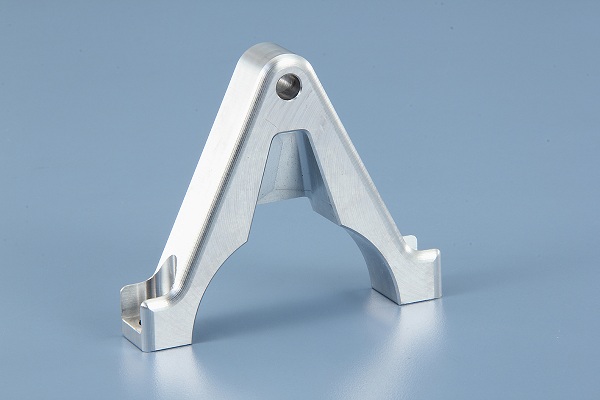
CNC milling machine, CNC milling machine, CNC milling plants, milling machine, CNC milling machine, milling machine products, mold development, mold design,mold development
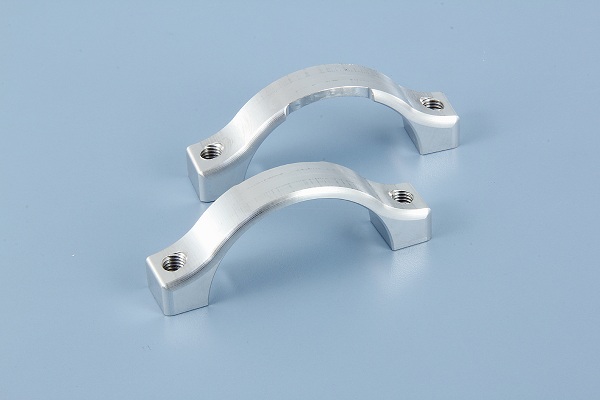
cnc銑床
Parts production, the production of metal parts, CNC parts production, product processing, semi-finished products processing, CNC machining
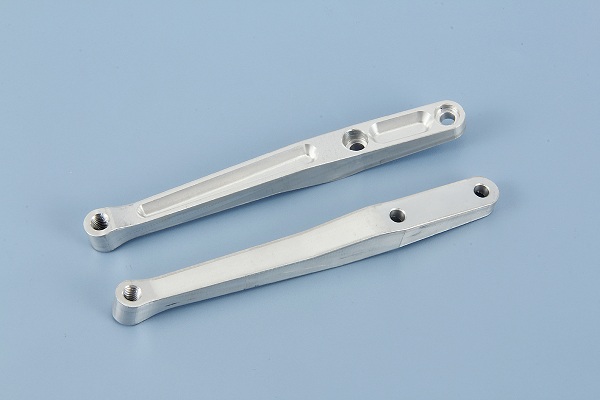
cnc銑床
Aluminum products processing, CNC machining of aluminum products, aluminum products, metal processing, CNC metal processing

cnc銑床
CNC銑床加工, CNC銑床加工廠,銑床加工,CNC銑床加工
cnc銑床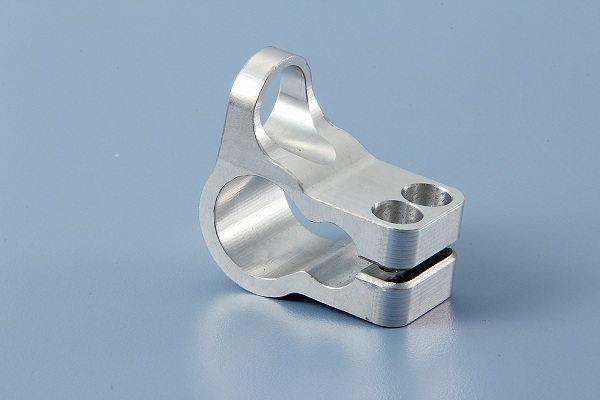
五金零件生產,CNC零件生產,成品加工
CNC銑床:數控技術的革命性應用
摘要:
數控銑床(Computer Numerical Control Milling Machine,CNC銑床)是一種利用計算機控制技術來實現自動化加工的機床。它革命性地改變了傳統銑床的加工方式,提高了生產效率和加工精度,廣泛應用於汽車、航空航天、模具製造等行業。本文將從CNC銑床的工作原理、應用領域、優勢以及未來發展趨勢等方面進行探討。
正文:
一、CNC銑床的工作原理
CNC銑床是一種集機械、電子、液壓、計算機等多種技術於一身的高精度加工設備。其工作原理主要基於計算機數控技術,通過預先編程好的加工程序,控制刀具在工件上移動,從而實現所需形狀的加工。具體而言,CNC銑床通過控制刀具在不同方向上的運動,以及刀具轉速和進給速度的控制,來完成對工件的切削加工。
二、CNC銑床的應用領域
汽車製造:在汽車製造過程中,許多汽車零部件需要高精度加工,如引擎缸頭、變速箱殼等,CNC銑床能夠提供精確的加工,保證零部件的質量和配合度。
航空航天:航空航天行業對零部件的精度和質量要求極高,CNC銑床能夠加工出符合航空航天標準的各種零部件,如發動機構件、機身結構件等。
模具製造:模具製造是CNC銑床的另一個重要應用領域,模具的加工精度直接影響到最終產品的質量,CNC銑床能夠高效地加工出各種複雜形狀的模具。
其他行業:除了上述行業外,CNC銑床還廣泛應用於船舶製造、醫療器械製造、電子零部件加工等領域。
三、CNC銑床的優勢
高精度:CNC銑床能夠實現高精度的加工,保證工件的尺寸精度和表面粗糙度要求。
高效率:相比傳統的手動銑床,CNC銑床具有更高的加工效率,能夠大大提高生產效率,降低成本。
靈活性:通過修改加工程序,CNC銑床能夠加工各種不同形狀和尺寸的工件,具有很強的靈活性和通用性。
自動化程度高:CNC銑床可以實現全自動化加工,無需人工干預,減少了人為因素對加工質量的影響。
四、CNC銑床的未來發展趨勢
智能化:隨著人工智能、大數據等技術的發展,未來的CNC銑床將更加智能化,能夠實現自動化加工、故障預測等功能。
高速化:未來的CNC銑床將朝著高速加工的方向發展,提高加工效率,滿足高精度、高效率的加工需求。
柔性化:未來的CNC銑床將更加柔性化,能夠適應不同的加工需求,實現多品種、小批量生產。
結語:
CNC銑床作為數控技術的一個典型應用,已經在現代製造業中發揮著重要作用,通過提高加工精度、生產效率和自動化程度,為各個行業帶來了巨大的效益。隨著科技的不斷進步,CNC銑床的功能將不斷增強,應用領域也將不斷擴大,相信它將在未來的製造業中發揮更加重要的作用。
五、CNC銑床的發展挑戰與解決方案
成本問題: 目前CNC銑床的設備和技術成本相對較高,這限制了一些中小型企業的使用。解決方案可以包括技術的進一步普及和成本的下降,例如通過技術創新、生產批量增加等方式降低設備成本。
技術人才短缺: CNC銑床的操作和維護需要具有相應技能和經驗的人才,但目前技術人才供應不足。解決方案可以包括加強相關技術培訓和教育,提高技術人才的供應量和質量。
加工過程監控問題: 在CNC銑床加工過程中,需要對加工過程進行監控和控制,以確保加工質量。目前存在的挑戰是監控技術和設備的不足。解決方案可以包括引入先進的監控技術,例如機器視覺技術、感知技術等,提高加工過程的監控效率和準確性。
安全問題: CNC銑床是一種高速、高精度的加工設備,操作不當可能存在安全隱患。解決方案可以包括加強安全培訓和教育,引入安全監控技術和設備,提高操作人員和設備的安全性。
六、結語
CNC銑床作為現代製造業中的重要設備,已經在提高生產效率、加工精度和產品質量方面發揮了重要作用。隨著科技的不斷進步和製造業的發展,CNC銑床將面臨更多的挑戰和機遇。通過持續的技術創新、人才培養和市場需求的不斷擴大,相信CNC銑床將在未來的製造業中發揮更加重要的作用,為製造業的發展做出更大的貢獻。
Title: CNC Milling Machine: A Revolutionary Application of CNC Technology
Summary:
CNC milling machine (Computer Numerical Control Milling Machine, CNC milling machine) is a machine tool that uses computer control technology to achieve automated processing. It has revolutionized the processing methods of traditional milling machines, improved production efficiency and processing accuracy, and is widely used in automobile, aerospace, mold manufacturing and other industries. This article will discuss the working principle, application fields, advantages and future development trends of CNC milling machines.
text:
1. Working principle of CNC milling machine
CNC milling machine is a high-precision processing equipment that integrates mechanical, electronic, hydraulic, computer and other technologies. Its working principle is mainly based on computer numerical control technology. Through pre-programmed processing programs, the tool is controlled to move on the workpiece to achieve the required shape processing. Specifically, CNC milling machines complete the cutting of the workpiece by controlling the movement of the tool in different directions, as well as the tool rotation speed and feed rate.
2. Application fields of CNC milling machines
Automobile manufacturing: During the automobile manufacturing process, many auto parts require high-precision processing, such as engine cylinder heads, gearbox casings, etc. CNC milling machines can provide precise processing to ensure the quality and fit of parts.
Aerospace: The aerospace industry has extremely high requirements for the accuracy and quality of parts. CNC milling machines can process various parts that meet aerospace standards, such as engine parts, fuselage structural parts, etc.
Mold manufacturing: Mold manufacturing is another important application field of CNC milling machines. The processing accuracy of molds directly affects the quality of the final product. CNC milling machines can efficiently process molds of various complex shapes.
Other industries: In addition to the above-mentioned industries, CNC milling machines are also widely used in shipbuilding, medical device manufacturing, electronic parts processing and other fields.
3. Advantages of CNC milling machines
High precision: CNC milling machines can achieve high-precision processing and ensure the dimensional accuracy and surface roughness requirements of the workpiece.
High efficiency: Compared with traditional manual milling machines, CNC milling machines have higher processing efficiency, which can greatly improve production efficiency and reduce costs.
Flexibility: By modifying the processing program, CNC milling machines can process workpieces of various shapes and sizes, and are highly flexible and versatile.
High degree of automation: CNC milling machines can achieve fully automated processing without manual intervention, reducing the impact of human factors on processing quality.
4. Future development trends of CNC milling machines
Intelligent: With the development of artificial intelligence, big data and other technologies, future CNC milling machines will be more intelligent and can realize functions such as automated processing and fault prediction.
High speed: CNC milling machines in the future will develop in the direction of high-speed processing, improve processing efficiency, and meet high-precision and high-efficiency processing needs.
Flexibility: Future CNC milling machines will be more flexible, able to adapt to different processing needs, and achieve multi-variety and small-batch production.
Conclusion:
As a typical application of CNC technology, CNC milling machines have played an important role in modern manufacturing, bringing huge benefits to various industries by improving processing accuracy, production efficiency and automation. With the continuous advancement of technology, the functions of CNC milling machines will continue to be enhanced and their application areas will continue to expand. I believe it will play a more important role in the future manufacturing industry.
5. Development challenges and solutions for CNC milling machines
Cost issue: The current equipment and technology costs of CNC milling machines are relatively high, which limits the use of some small and medium-sized enterprises. Solutions can include further popularization of technology and reduction of costs, such as reducing equipment costs through technological innovation, increased production batches, etc.
Shortage of technical talents: The operation and maintenance of CNC milling machines requires talents with corresponding skills and experience, but the supply of technical talents is currently insufficient. Solutions could include strengthening relevant technical training and education and improving the supply and quality of technical talent.
Process monitoring issues: During CNC milling machine processing, the processing process needs to be monitored and controlled to ensure processing quality. The current challenge is insufficient monitoring technology and equipment. Solutions can include the introduction of advanced monitoring technologies, such as machine vision technology, perception technology, etc., to improve the monitoring efficiency and accuracy of the processing process.
Safety issues: CNC milling machine is a high-speed, high-precision processing equipment, and improper operation may cause safety hazards. Solutions can include strengthening safety training and education, introducing safety monitoring technology and equipment, and improving the safety of operators and equipment.
6. Conclusion
As an important piece of equipment in modern manufacturing, CNC milling machines have played an important role in improving production efficiency, processing accuracy and product quality. With the continuous advancement of technology and the development of manufacturing industry, CNC milling machines will face more challenges and opportunities. Through continuous technological innovation, talent training and the continuous expansion of market demand, it is believed that CNC milling machines will play a more important role in the future manufacturing industry and make greater contributions to the development of the manufacturing industry.
タイトル: CNC フライス盤: CNC テクノロジーの革命的な応用
まとめ:
CNCフライス盤(Computer Numerical Control Milling Machine、CNCフライス盤)とは、コンピュータ制御技術を利用して自動加工を実現した工作機械です。 従来のフライス盤の加工方法に革新をもたらし、生産効率と加工精度を向上させ、自動車、航空宇宙、金型製造などの業界で幅広く使用されています。 この記事では、CNCフライス盤の動作原理、応用分野、利点、将来の開発動向について説明します。
文章:
1. CNCフライス盤の動作原理
CNCフライス盤は、機械、電子、油圧、コンピュータなどの技術を統合した高精度加工装置です。 その動作原理は主にコンピュータ数値制御技術に基づいており、事前にプログラムされた加工プログラムによって工具がワーク上で移動するように制御され、必要な形状加工を実現します。 具体的には、CNC フライス盤は、工具の回転速度と送り速度だけでなく、さまざまな方向への工具の動きを制御することによってワークピースの切削を完了します。
2. CNCフライス盤の応用分野
自動車製造: 自動車の製造プロセスでは、エンジンのシリンダー ヘッド、ギアボックスのケーシングなど、多くの自動車部品が高精度の加工を必要とします。CNC フライス盤は、部品の品質と適合性を確保するための精密な加工を提供します。
航空宇宙: 航空宇宙産業では、部品の精度と品質に対する要求が非常に高く、CNC フライス盤は、エンジン部品、胴体構造部品など、航空宇宙規格を満たすさまざまな部品を加工できます。
金型の製造: 金型の製造も CNC フライス盤の重要な応用分野です。金型の加工精度は最終製品の品質に直接影響します。CNC フライス盤はさまざまな複雑な形状の金型を効率的に加工できます。
その他の産業:上記の産業以外にも、CNC フライス盤は造船、医療機器製造、電子部品加工などの分野でも広く使用されています。
3. CNCフライス盤のメリット
高精度:CNC フライス盤は高精度加工を実現し、ワークピースの寸法精度と表面粗さの要件を保証します。
高効率: 従来の手動フライス盤と比較して、CNC フライス盤は加工効率が高いため、生産効率が大幅に向上し、コストが削減されます。
柔軟性:CNCフライス盤は、加工プログラムを変更することで、さまざまな形状やサイズのワークを加工することができ、柔軟性と汎用性が高くなります。
高度な自動化: CNC フライス盤は、手動介入なしで完全に自動化された加工を実現し、加工品質に対する人的要因の影響を軽減します。
4. CNCフライス盤の今後の開発動向
インテリジェント: 人工知能、ビッグデータ、その他のテクノロジーの発展により、将来の CNC フライス盤はよりインテリジェントになり、自動処理や故障予測などの機能を実現できるようになります。
高速:今後のCNCフライス盤は高速加工の方向に発展し、加工効率が向上し、高精度・高効率加工のニーズに応えます。
柔軟性: 将来の CNC フライス盤はより柔軟になり、さまざまな加工ニーズに適応し、多品種少量生産を実現できるようになります。
結論:
CNC テクノロジーの典型的な応用例として、CNC フライス盤は現代の製造において重要な役割を果たしており、加工精度、生産効率、自動化の向上によりさまざまな業界に多大な利益をもたらしています。 今後も技術の進歩によりCNCフライス盤の機能はさらに向上し、その適用範囲はさらに拡大し、将来の製造業においてますます重要な役割を果たしていくと考えています。
5. CNCフライス盤の開発課題と解決策
コストの問題: 現在の CNC フライス盤の設備および技術コストは比較的高いため、一部の中小企業の使用は制限されています。 解決策には、技術革新による設備コストの削減、生産バッチの増加など、技術のさらなる普及とコストの削減が含まれます。
技術人材の不足:CNC フライス盤の操作とメンテナンスには、相応のスキルと経験を備えた人材が必要ですが、現在、技術人材の供給が不足しています。 解決策には、関連する技術トレーニングと教育を強化し、技術人材の供給と質を向上させることが考えられます。
プロセス監視の問題: CNC フライス盤の加工中、加工品質を確保するために加工プロセスを監視および制御する必要があります。 現在の課題は、監視技術と機器が不十分であることです。 ソリューションには、処理プロセスの監視効率と精度を向上させるための、マシンビジョン技術や認識技術などの高度な監視技術の導入が含まれます。
安全性の問題: CNC フライス盤は高速、高精度の加工装置であり、不適切な操作は安全上の問題を引き起こす可能性があります。 解決策には、安全トレーニングと教育の強化、安全監視技術と機器の導入、オペレータと機器の安全性の向上などが含まれます。
6. 結論
CNC フライス盤は現代の製造における重要な設備として、生産効率、加工精度、製品品質の向上に重要な役割を果たしてきました。 技術の継続的な進歩と製造業の発展に伴い、CNC フライス盤はより多くの課題と機会に直面することになります。 継続的な技術革新、人材育成、市場需要の継続的な拡大により、CNCフライス盤は将来の製造業においてより重要な役割を果たし、製造業の発展に大きく貢献すると考えられています。
Titel: CNC-Fräsmaschine: Eine revolutionäre Anwendung der CNC-Technologie
Zusammenfassung:
Eine CNC-Fräsmaschine (Computer Numerical Control Milling Machine, CNC-Fräsmaschine) ist eine Werkzeugmaschine, die Computersteuerungstechnologie nutzt, um eine automatisierte Bearbeitung zu erreichen. Es hat die Bearbeitungsmethoden herkömmlicher Fräsmaschinen revolutioniert, die Produktionseffizienz und Bearbeitungsgenauigkeit verbessert und wird häufig in der Automobil-, Luft- und Raumfahrt-, Formenbau- und anderen Industrien eingesetzt. In diesem Artikel werden das Funktionsprinzip, Anwendungsbereiche, Vorteile und zukünftige Entwicklungstrends von CNC-Fräsmaschinen erörtert.
Text:
1. Funktionsprinzip der CNC-Fräsmaschine
Die CNC-Fräsmaschine ist ein hochpräzises Bearbeitungsgerät, das mechanische, elektronische, hydraulische, Computer- und andere Technologien integriert. Sein Funktionsprinzip basiert hauptsächlich auf computergestützter numerischer Steuerungstechnologie. Durch vorprogrammierte Bearbeitungsprogramme wird das Werkzeug so gesteuert, dass es sich auf dem Werkstück bewegt, um die erforderliche Formbearbeitung zu erreichen. Konkret vervollständigen CNC-Fräsmaschinen das Schneiden des Werkstücks, indem sie die Bewegung des Werkzeugs in verschiedene Richtungen sowie die Rotationsgeschwindigkeit und Vorschubgeschwindigkeit des Werkzeugs steuern.
2. Einsatzgebiete von CNC-Fräsmaschinen
Automobilherstellung: Während des Automobilherstellungsprozesses erfordern viele Autoteile eine hochpräzise Bearbeitung, wie z. B. Motorzylinderköpfe, Getriebegehäuse usw. CNC-Fräsmaschinen können eine präzise Bearbeitung ermöglichen, um die Qualität und Passform der Teile sicherzustellen.
Luft- und Raumfahrt: Die Luft- und Raumfahrtindustrie stellt extrem hohe Anforderungen an die Genauigkeit und Qualität der Teile. CNC-Fräsmaschinen können verschiedene Teile bearbeiten, die den Luft- und Raumfahrtstandards entsprechen, wie z. B. Motorteile, Rumpfstrukturteile usw.
Formenbau: Der Formenbau ist ein weiteres wichtiges Anwendungsgebiet von CNC-Fräsmaschinen. Die Bearbeitungsgenauigkeit von Formen wirkt sich direkt auf die Qualität des Endprodukts aus. CNC-Fräsmaschinen können Formen verschiedener komplexer Formen effizient bearbeiten.
Andere Branchen: Neben den oben genannten Branchen werden CNC-Fräsmaschinen auch häufig im Schiffbau, in der Herstellung medizinischer Geräte, in der Verarbeitung elektronischer Teile und in anderen Bereichen eingesetzt.
3. Vorteile von CNC-Fräsmaschinen
Hohe Präzision: CNC-Fräsmaschinen können eine hochpräzise Bearbeitung erreichen und die Maßhaltigkeit und Oberflächenrauheitsanforderungen des Werkstücks sicherstellen.
Hohe Effizienz: Im Vergleich zu herkömmlichen manuellen Fräsmaschinen weisen CNC-Fräsmaschinen eine höhere Verarbeitungseffizienz auf, was die Produktionseffizienz erheblich verbessern und die Kosten senken kann.
Flexibilität: Durch die Anpassung des Bearbeitungsprogramms können CNC-Fräsmaschinen Werkstücke unterschiedlicher Form und Größe bearbeiten und sind äußerst flexibel und vielseitig.
Hoher Automatisierungsgrad: CNC-Fräsmaschinen können eine vollautomatische Bearbeitung ohne manuelles Eingreifen erreichen und so den Einfluss menschlicher Faktoren auf die Bearbeitungsqualität reduzieren.
4. Zukünftige Entwicklungstrends von CNC-Fräsmaschinen
Intelligent: Mit der Entwicklung von künstlicher Intelligenz, Big Data und anderen Technologien werden zukünftige CNC-Fräsmaschinen intelligenter und können Funktionen wie automatisierte Bearbeitung und Fehlervorhersage realisieren.
Hohe Geschwindigkeit: CNC-Fräsmaschinen werden sich in Zukunft in Richtung Hochgeschwindigkeitsbearbeitung entwickeln, die Bearbeitungseffizienz verbessern und hochpräzise und hocheffiziente Bearbeitungsanforderungen erfüllen.
Flexibilität: Zukünftige CNC-Fräsmaschinen werden flexibler sein, sich an unterschiedliche Bearbeitungsanforderungen anpassen und eine Sortenvielfalt und Kleinserienfertigung ermöglichen.
Abschluss:
Als typische Anwendung der CNC-Technologie spielen CNC-Fräsmaschinen eine wichtige Rolle in der modernen Fertigung und bringen enorme Vorteile für verschiedene Branchen, indem sie die Bearbeitungsgenauigkeit, Produktionseffizienz und Automatisierung verbessern. Mit der kontinuierlichen Weiterentwicklung der Technologie werden die Funktionen von CNC-Fräsmaschinen weiter verbessert und ihre Anwendungsbereiche werden sich weiter erweitern. Ich glaube, dass sie in der zukünftigen Fertigungsindustrie eine wichtigere Rolle spielen werden.
5. Entwicklungsherausforderungen und Lösungen für CNC-Fräsmaschinen
Kostenproblem: Die aktuellen Ausrüstungs- und Technologiekosten von CNC-Fräsmaschinen sind relativ hoch, was den Einsatz einiger kleiner und mittlerer Unternehmen einschränkt. Zu den Lösungen können eine weitere Popularisierung der Technologie und eine Kostensenkung gehören, z. B. die Reduzierung der Ausrüstungskosten durch technologische Innovation, größere Produktionschargen usw.
Mangel an technischen Talenten: Die Bedienung und Wartung von CNC-Fräsmaschinen erfordert Talente mit entsprechenden Fähigkeiten und Erfahrungen, doch das Angebot an technischen Talenten ist derzeit unzureichend. Zu den Lösungen könnten die Stärkung der entsprechenden technischen Ausbildung und Ausbildung sowie die Verbesserung des Angebots und der Qualität technischer Talente gehören.
Probleme bei der Prozessüberwachung: Bei der CNC-Fräsmaschinenbearbeitung muss der Bearbeitungsprozess überwacht und gesteuert werden, um die Bearbeitungsqualität sicherzustellen. Die aktuelle Herausforderung besteht in unzureichender Überwachungstechnik und -ausrüstung. Lösungen können die Einführung fortschrittlicher Überwachungstechnologien wie Bildverarbeitungstechnologie, Wahrnehmungstechnologie usw. umfassen, um die Überwachungseffizienz und Genauigkeit des Verarbeitungsprozesses zu verbessern.
Sicherheitsprobleme: Bei der CNC-Fräsmaschine handelt es sich um ein Hochgeschwindigkeits- und Hochpräzisionsbearbeitungsgerät, und unsachgemäßer Betrieb kann zu Sicherheitsrisiken führen. Zu den Lösungen können die Stärkung der Sicherheitsschulung und -erziehung, die Einführung von Sicherheitsüberwachungstechnologie und -ausrüstung sowie die Verbesserung der Sicherheit von Bedienern und Geräten gehören.
6. Fazit
Als wichtiger Ausrüstungsgegenstand in der modernen Fertigung haben CNC-Fräsmaschinen eine wichtige Rolle bei der Verbesserung der Produktionseffizienz, der Bearbeitungsgenauigkeit und der Produktqualität gespielt. Mit der kontinuierlichen Weiterentwicklung der Technologie und der Entwicklung der Fertigungsindustrie werden CNC-Fräsmaschinen vor immer mehr Herausforderungen und Chancen stehen. Man geht davon aus, dass CNC-Fräsmaschinen durch kontinuierliche technologische Innovation, Talentschulung und die kontinuierliche Ausweitung der Marktnachfrage eine wichtigere Rolle in der künftigen Fertigungsindustrie spielen und einen größeren Beitrag zur Entwicklung der Fertigungsindustrie leisten werden.